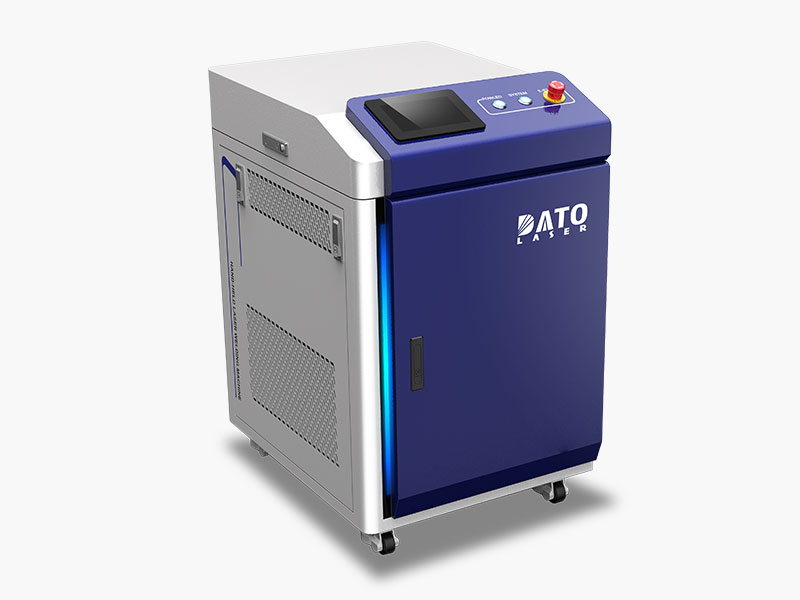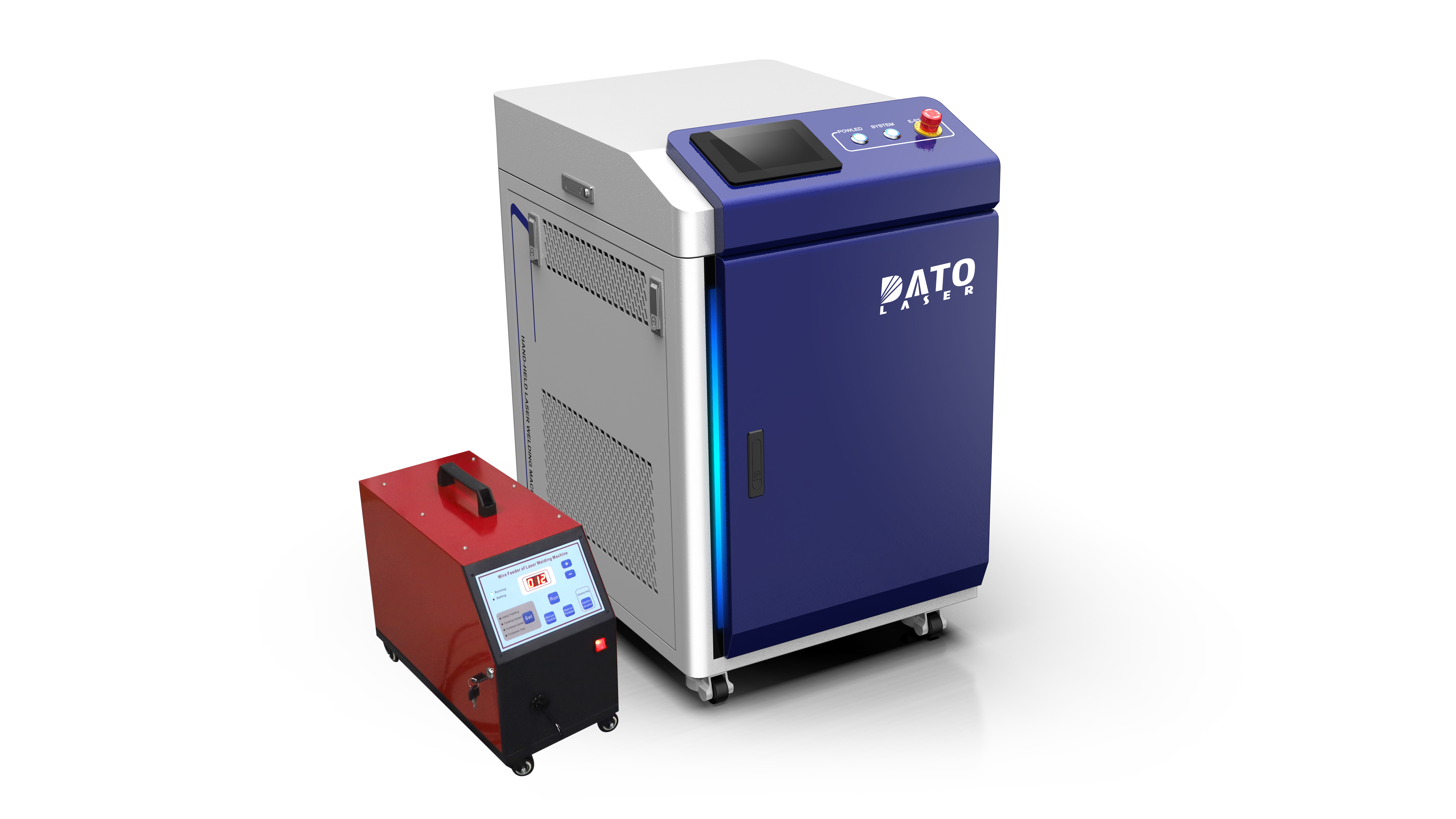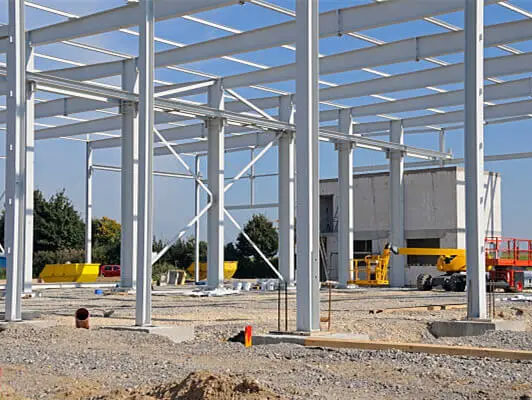How Fast Is Laser Welding Really? Speed Comparison with Traditional Methods

When manufacturers consider upgrading their welding processes, speed is often a crucial factor. But just how fast is laser welding compared to traditional methods? Let's dive into a detailed comparison that might revolutionize your perspective on production efficiency.
Breaking Down the Speed Factor
The Raw Numbers
Traditional welding methods like MIG or TIG typically achieve welding speeds of 10-20 inches per minute under optimal conditions. In contrast, Dato's advanced laser welding systems can reach speeds of up to 200 inches per minute or more, depending on the material and application. This dramatic difference becomes even more significant when you consider the complete production cycle.
Understanding True Production Speed
Beyond Simple Welding Velocity
While the raw welding speed is impressive, the true advantage of laser welding becomes apparent when considering the entire production process. Our DT-HJ Series laser welding machines demonstrate superior efficiency in several key areas:
Setup Time
Traditional welding requires significant setup time between different materials or joint types. The DT-HJ Series features rapid parameter switching and automated setup capabilities, reducing changeover time from hours to minutes. This means more actual production time and less downtime.
Single-Pass Efficiency
Most traditional welding methods require multiple passes for thick materials. Our laser welding systems often achieve full penetration in a single pass, even on materials up to 10mm thick, depending on the material type. This capability alone can reduce production time by 50-70%.
Post-Processing Time
The precision and clean welds produced by laser welding virtually eliminate the need for post-weld cleaning and finishing. This removes an entire step from the production process, further accelerating overall throughput.
Real-World Applications and Speed Comparisons
Automotive Industry
In automotive component manufacturing, where precision and speed are crucial, our laser welding systems consistently outperform traditional methods:
Door panel welding: 3x faster than spot welding
Frame assembly: 5x faster than MIG welding
Battery case sealing: Up to 10x faster than conventional methods
Electronics Manufacturing
For electronic component assembly, the speed advantage is even more pronounced:
Battery tab welding: 20x faster than soldering
Circuit board assembly: 15x faster than traditional joining methods
Connector manufacturing: 8x faster than conventional welding
Heavy Industry
Even in heavy industrial applications, laser welding shows remarkable speed improvements:
Pipe welding: 4x faster than TIG welding
Structural steel joining: 3x faster than MIG welding
Tank fabrication: 2-3x faster than traditional methods
Factors Affecting Welding Speed
Material Considerations
Different materials allow for different maximum welding speeds. Our DT-HJ Series automatically optimizes parameters for various materials:
Stainless Steel: Up to 180 inches per minute
Aluminum: Up to 150 inches per minute
Carbon Steel: Up to 200 inches per minute
Thickness Impact
Material thickness significantly affects welding speed. Our systems maintain high speeds even with varying thickness:
Thin materials (0.5-2mm): Maximum speed capability
Medium thickness (2-5mm): Moderate to high speeds
Thick materials (5mm+): Optimized speed for full penetration
Maximizing Speed Benefits with Dato's Technology
Advanced Features
Our laser welding systems incorporate several features to maximize production speed:
Automated parameter adjustment
Real-time process monitoring
Quick-change focusing optics
Integrated quality control systems
Production Planning Integration
To help you maximize the speed advantages of laser welding, we offer:
Production flow analysis
Process optimization consulting
Custom automation solutions
Integration with existing production lines
The Economic Impact of Increased Speed
When considering the switch to laser welding, the economic benefits of increased speed are substantial:
Higher production capacity
Reduced labor costs per unit
Lower energy consumption per part
Improved delivery times
Enhanced competitive advantage
Making the Switch to Faster Production
Ready to experience the speed advantage of laser welding? Dato offers comprehensive support for transitioning to laser welding technology:
Initial assessment of your current production speed
Custom speed optimization plans
Operator training for maximum efficiency
Ongoing technical support
The Future of Welding Speed
As technology continues to advance, Dato remains at the forefront of welding speed innovation. Our ongoing research and development ensure that our customers always have access to the fastest, most efficient welding solutions available.

Ready to Accelerate Your Production?
Contact Dato today to learn how our laser welding systems can dramatically increase your production speed. Our experts will analyze your specific needs and demonstrate how our DT-HJ Series can transform your welding operations. Don't let slower traditional welding methods hold back your productivity – embrace the speed of laser welding technology.
Related Blogs
-
 Exploring the Safety, Precision, and Industrial Benefits of Laser Surface CleaningIn today’s fast-paced industrial world, where quality, efficiency, and sustainability are top priorities, manufacturers are constantly seeking better ways to clean metal surfaces without compromising material integrityBlog
Exploring the Safety, Precision, and Industrial Benefits of Laser Surface CleaningIn today’s fast-paced industrial world, where quality, efficiency, and sustainability are top priorities, manufacturers are constantly seeking better ways to clean metal surfaces without compromising material integrityBlog -
 A Complete Guide by DATO and LeapionIn modern industry, surface preparation and maintenance play a crucial role in achieving high-quality manufacturing results. Laser cleaning machines have emerged as one of the most innovative, efficient, and environmentally friendly tools for removing contaminantsBlog
A Complete Guide by DATO and LeapionIn modern industry, surface preparation and maintenance play a crucial role in achieving high-quality manufacturing results. Laser cleaning machines have emerged as one of the most innovative, efficient, and environmentally friendly tools for removing contaminantsBlog -
 Laser cleaning machines are revolutionizing industrial surface cleaning by offering a faster, safer, and more eco-friendly alternative to traditional methods. Whether removing rust, paint, oil, oxide, or other surface contaminants, laser cleaning has become a cutting-edge solution in manufacturing,Blog
Laser cleaning machines are revolutionizing industrial surface cleaning by offering a faster, safer, and more eco-friendly alternative to traditional methods. Whether removing rust, paint, oil, oxide, or other surface contaminants, laser cleaning has become a cutting-edge solution in manufacturing,Blog -
 Introduction: Transforming EV Battery Manufacturing Through Laser TechnologyThe electric vehicle revolution has accelerated dramatically over the past decade, bringing with it unprecedented challenges and opportunities in battery manufacturing. As global automakers commit billions to electrificationBlog
Introduction: Transforming EV Battery Manufacturing Through Laser TechnologyThe electric vehicle revolution has accelerated dramatically over the past decade, bringing with it unprecedented challenges and opportunities in battery manufacturing. As global automakers commit billions to electrificationBlog














